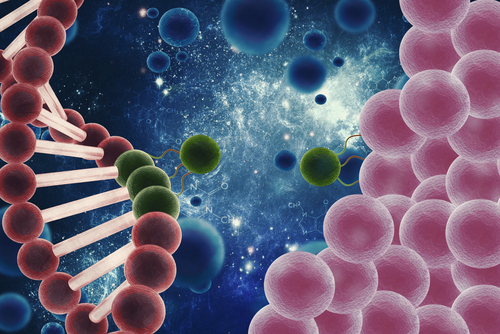Human cells are first responders to repair damaged DNAs
ANI Jun 21, 2018
A new study revealed that the cells are the first responders in the human body, which repairs the damaged DNA.

The findings are timely, as scientists are delving into genome editing with the DNA-cutting enzyme, CRISPR-Cas9, to treat diseases or to advance scientific knowledge about humans, plants, animals and other organisms, said Irene Chiolo. Chiolo and her team of researchers using fluorescent markers tracked damaged DNA in fruit fly cells and mouse cells; it revealed that the cell launches an emergency response to repair broken DNA strands from a type of tightly-packed DNA, heterochromatin.
"Heterochromatin is also referred to as the 'dark matter of the genome,' because so little is known about it," said Chiolo. "But DNA damage in heterochromatin is likely a major driving force for cancer formation," she added. The scientists found that after the DNA strands are broken, the cell launches a series of threads- nuclear actin filaments in order to assemble and create a temporary highway to the edge of the nucleus.
It is here that the protein known as myosins (a.k.a. paramedics) comes into play. "Myosins are conveyed as a walking molecule because they have two legs. One is attached and the other moves. It's like a molecular machine that walks along the filaments," she said. The myosins pick up injured DNA strands and walk them along the filament road and then reach the emergency room which is located at the periphery of the nucleus.
"We knew, based on our prior study, that there was an emergency room -- the nuclear pore where the cell fixes its broken DNA strands. Now, we have discovered how the damaged DNA travels there" Chiolo said. She pointed out that the damage triggers a defense mechanism that quickly builds the actin filament while getting the myosin ready for further action. The researchers plan further studies examining the repair of DNA in heterochromatin.
"I'm excited to see how the molecular mechanisms we uncovered work in humans, as well as in plants that have much larger heterochromatin. It will be fascinating to see how such a complex repair mechanism functions and evolves over time and what aspects of the mechanisms may be adapted for other functions," said Christopher Caridi, a co-lead author for the study and a postdoctoral researcher in Chiolo's lab at USC Dornsife. The study appears in Nature Journal.
-
Exclusive Write-ups & Webinars by KOLs
-
Daily Quiz by specialty
-
Paid Market Research Surveys
-
Case discussions, News & Journals' summaries